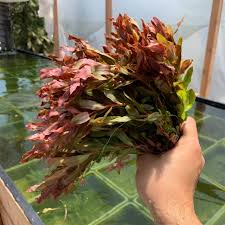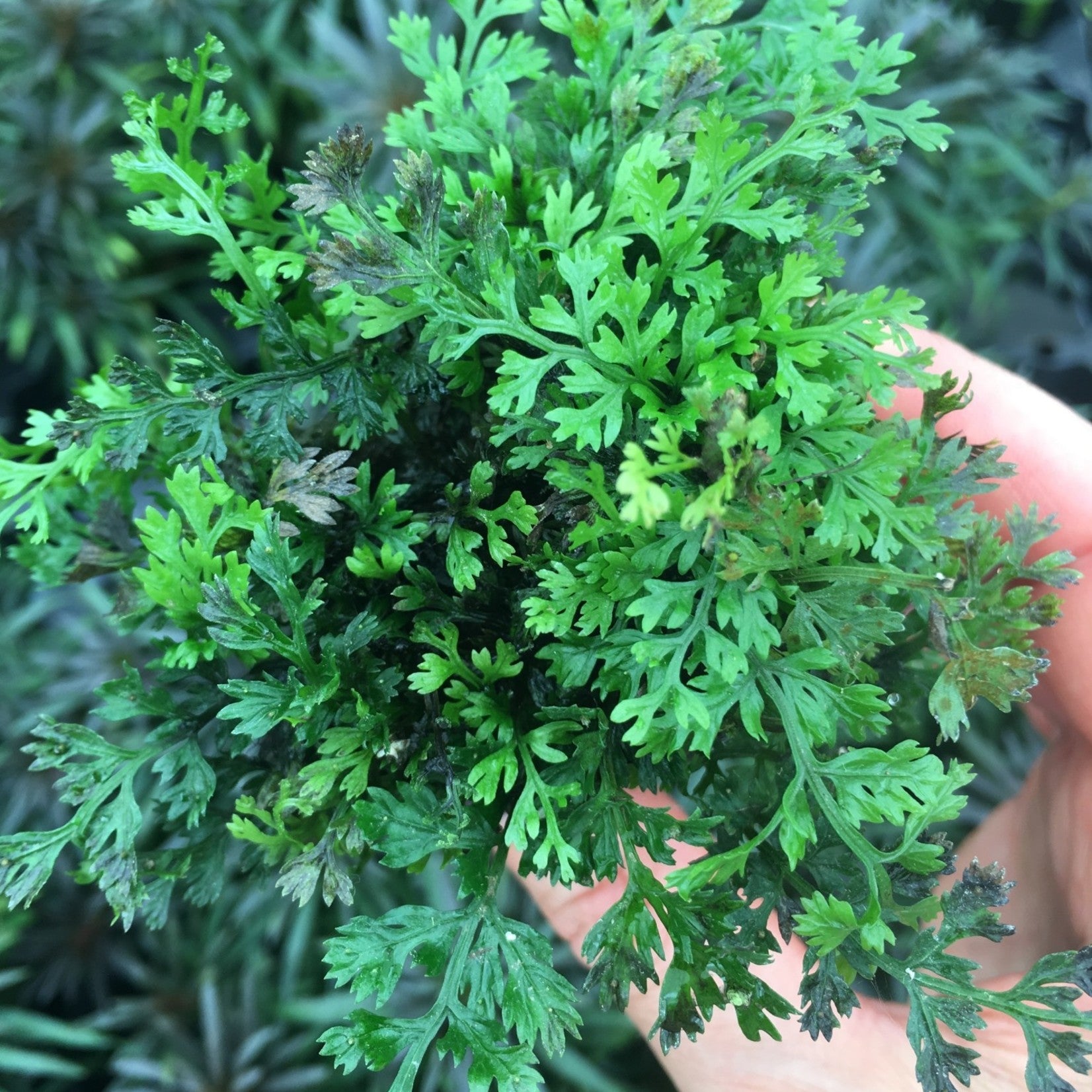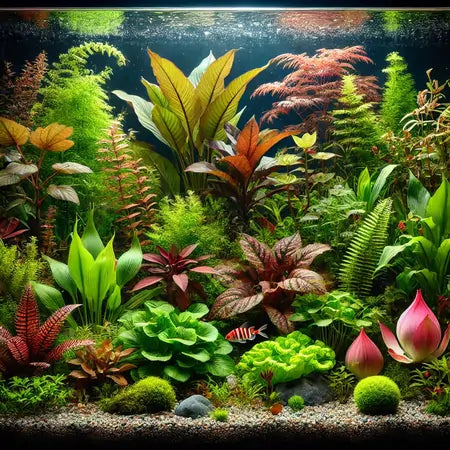Trending searches
$0

Creating a vibrant and beautiful aquascape doesn’t necessarily require a lot of bright light. There are numerous plants that thrive in low light conditions, making your aquarium look lush and lively. Here, we’ll explore some of the best low light plants that you can incorporate into your aquascape for a stunning underwater landscape.
Java Fern is a hardy plant that thrives in low light conditions. Its unique, broad leaves make it a standout in any tank, providing a perfect backdrop for other aquarium inhabitants. One of the great advantages of Java Fern is its versatility; it can be attached to rocks or driftwood, making it ideal for creative aquascaping. You don’t have to worry much about its care, as Java Fern can tolerate a wide range of water conditions and temperatures. Just ensure it’s not buried in the substrate, as this can lead to root rot.
Another fantastic aspect of Java Fern is that it propagates through rhizome division. This means you can easily create multiple plants from a single parent, gradually filling your tank with lush greenery. As the plant matures, you’ll notice tiny plantlets forming on the leaves, which you can detach and anchor to different parts of your tank. Its slow growth rate means less frequent trimming, making Java Fern a low-maintenance treasure. Plus, it provides excellent hiding spots for small fish and shrimp, contributing to a more dynamic and interactive aquarium environment.
If you’re just starting with aquascaping or want to enhance your existing setup, Java Fern should be on the top of your list. It’s forgiving nature allowing beginners to up their aquascaping game without diving into intensive plant care. To get the most out of your Java Fern, consider placing it in moderate water flow areas to prevent debris from settling on its leaves, which can impede growth. With minimal effort, this plant will offer you robust health and an attractive appearance, making your tank irresistibly inviting!
Anubias is known for its thick, dark green leaves and its ability to grow in low light. It’s a low-maintenance plant that can attach to rocks and driftwood, adding visual interest to any aquascape. Its durability is impressive, making it a favorite among both novice and experienced aquarists. You can place Anubias in different parts of the tank to create focal points or use it as a foreground plant to add depth.
Anubias varieties, such as Anubias Nana and Anubias Barteri, are versatile and can tolerate a range of conditions. They grow slowly, which means they won’t need frequent pruning. Anubias also have a strong root system that allows them to anchor securely, preventing them from floating away. If you notice algae build-up on the leaves, gently cleaning them with a soft brush will help maintain their vibrant appearance.
Cryptocoryne, or ‘Crypts,’ come in various shapes and sizes, making them versatile for different aquascape designs. They do well in low light and offer a range of colors from green to red. These plants are excellent for creating diverse, visually appealing landscapes. Cryptocoryne Lutea, for example, is a medium-sized crypt with long stems and pointed green leaves that grow upright, making it an ideal midground plant Cryptocoryne Crypt Lutea.
One characteristic to be mindful of is ‘Crypt melt,’ where the plant’s leaves dissolve when introduced to new environments. Fortunately, this is temporary, and the plant will recover and grow new leaves once acclimated. Crypts are adaptable to various substrate types and water parameters, making them a robust choice for aquariums of all sizes. Their ability to send out runners means they will gradually form a dense, lush carpet over time, enhancing the visual complexity and depth of your tank.
Marimo Moss Balls are unique and fun additions to low light aquariums. They are easy to care for and can live for many years. Simply place them in your tank, and they’ll add a touch of whimsy. These moss balls are, in reality, a type of algae that naturally forms into spherical shapes. They don’t require special substrate or fertilizers, making them perfect for beginners.
To keep Marimo Moss Balls healthy, gently roll them during water changes to maintain their shape and prevent debris accumulation. Periodically, you can rinse them under tap water and gently squeeze out excess water to ensure they stay clean and vibrant. These moss balls are also excellent biofiltration aids, as they absorb excess nutrients, helping to prevent algae blooms and contribute to water clarity. Moreover, small fish and shrimps enjoy playing around them, making them a delightful addition to any tank.
Java Moss is an excellent choice for aquascapers looking to create a lush carpet or cover for driftwood and rocks. It thrives in low light and can tolerate a wide range of water conditions. This versatile moss can be spread across the substrate to form a green carpet, or you can anchor it to hardscapes for a more intricate look.
Java Moss is particularly beneficial in shrimp tanks, as it provides an excellent hiding spot for baby shrimp, increasing their survival rates. Its dense growth also creates a perfect environment for microorganisms, contributing to the overall health of the tank. As Java Moss is fast-growing, regular trimming is essential to keep it from taking over your aquascape. Use a pair of sharp aquascaping scissors to maintain its shape and promote new growth.
Bucephalandra, or Buces, are known for their attractive colors and textures. They are slow-growing plants that do well in low light and can be attached to various surfaces within the aquarium. Buces come in a wide range of varieties, each offering unique leaf shapes and colors, from deep green to bluish hues. They are perfect for adding subtle details to your aquascape.
As epiphytic plants, Buces can be attached to rocks, driftwood, or other decor items. Simply use aquarium-safe glue or tie them with fishing line to secure them in place. These plants also benefit from regular water changes, ensuring they receive a steady supply of nutrients. Despite their slow growth, Buces’ resilience and striking appearance make them highly sought after by aquascapers looking to create intricate and beautiful tank setups.
Hornwort is a fast-growing, feathery plant that can thrive in low light conditions. It’s great for providing cover for fish and adding a dynamic look to your aquascape. One of the key features of Hornwort is its ability to oxygenate the water, making it beneficial for both plant and fish health. Its rapid growth can also help combat algae by absorbing excess nutrients.
Unlike rooted plants, Hornwort floats freely in the water or can be anchored using plant weights. It requires little maintenance but benefits from occasional thinning to prevent it from overshadowing other plants. Its feathery leaves offer an excellent habitat for small fish and fry, making it an invaluable plant for breeding tanks. Additionally, Hornwort readily adapts to a wide range of water conditions, further enhancing its appeal as a robust and versatile option for aquascaping.
Water Wisteria can adapt to various lighting conditions, making it ideal for low light aquariums. Its intricate leaves create a bushy effect, providing an excellent habitat for fish. Water Wisteria is known for its fast growth and ability to absorb excess nutrients, helping to maintain water quality and reduce algae growth. It’s also a versatile plant that can be used as a background or midground plant.
The Amazon Sword is popular for its impressive size and ability to thrive in low light. Its large, sword-shaped leaves can serve as a focal point in any aquascape. One of the key advantages of the Amazon Sword is its robust nature. It can grow in a variety of water conditions and doesn’t require CO2 supplementation, making it an excellent choice for beginner aquarists.
Amazon Swords are heavy root feeders, so ensuring they have a nutrient-rich substrate or root tabs will promote their growth. Their large leaves offer excellent cover for fish and can create a natural-looking environment. Periodic trimming of dead or yellowing leaves will keep the plant healthy and encourage new growth. This plant is ideal for larger aquariums due to its size, but with regular maintenance, it can be accommodated in smaller tanks as well.
Dwarf Sagittaria is perfect for creating a grassy foreground in low light tanks. It grows quickly and forms a dense carpet, enhancing the depth and complexity of the aquascape. This plant is incredibly easy to care for and can tolerate varying water conditions and temperatures, making it a versatile choice for aquascapers at any skill level.
To ensure healthy growth, provide Dwarf Sagittaria with a nutrient-rich substrate. Regular trimming will prevent it from overshadowing other plants and maintain a neat, carpet-like appearance. This plant also propagates through runners, so be prepared for it to spread over time. Dwarf Sagittaria offers an excellent hiding place for small fish and fry, contributing to a thriving and balanced aquarium ecosystem.
The Pygmy Chain Sword offers a beautiful grassy look and spreads rapidly even in low light. It’s ideal for filling out the bottom of the aquarium with minimal care. This plant forms a dense, lush foreground carpet that adds a touch of natural beauty to your aquascape.
The African Water Fern is a slow-growing plant that adds a unique texture to aquascapes. It thrives in low light and can be attached to rocks or wood for added visual intrigue. This fern is known for its resilience and ability to tolerate different water conditions, making it a reliable choice for aquarists of all skill levels.
Anubias Nana is a smaller variety of the Anubias family, perfect for low light tanks. Its petite size makes it suitable for foreground planting and adds diversity to plant arrangements. Like other Anubias species, Anubias Nana is incredibly hardy and low maintenance, thriving in a variety of water conditions without the need for CO2 supplementation.
Micro Sword is another excellent carpeting plant for low light aquariums. Its fine blades create a lush, green mat that enhances the overall aquascape. This plant is ideal for creating a natural, grassy foreground and requires minimal care. Regular trimming will ensure it maintains a neat appearance without overtaking other plants.
Also known as African Water Fern, Bolbitis Heudelotii features delicate, fern-like leaves that grow slowly in low light. It’s a great choice for adding elegance to any aquascape. This plant can be attached to hardscapes like rocks and driftwood, creating a layered, natural look. Its slow growth rate means infrequent trimming is needed, making it suitable for low-maintenance setups.



Check out our shop for a variety of fresh, farm-grown plants! Find the perfect options to enhance your aquarium today.
!